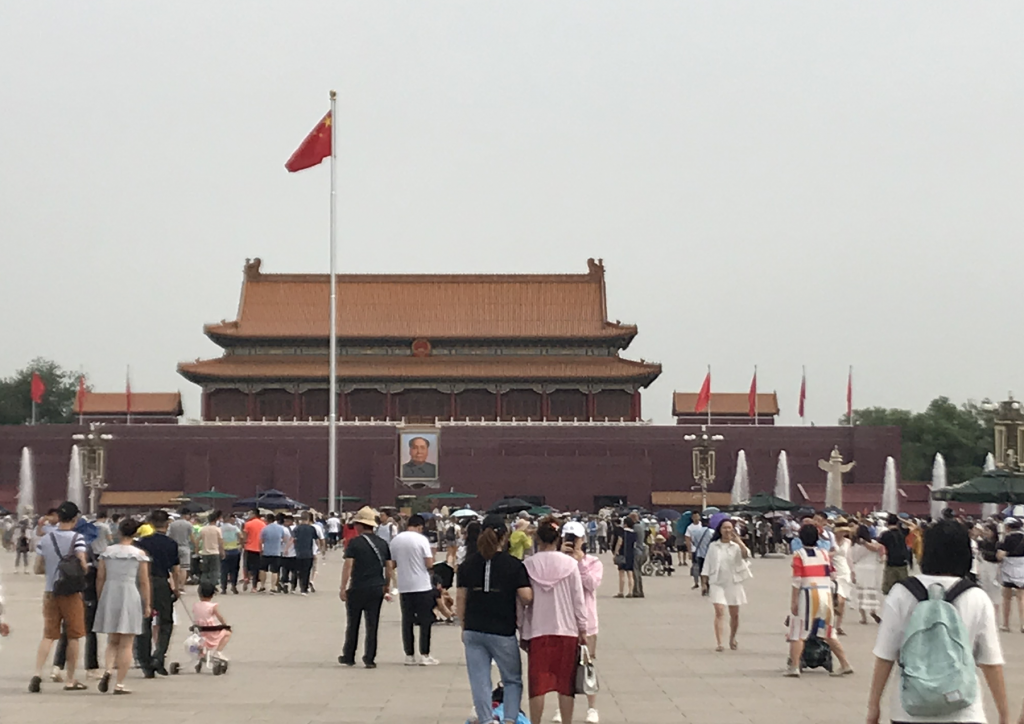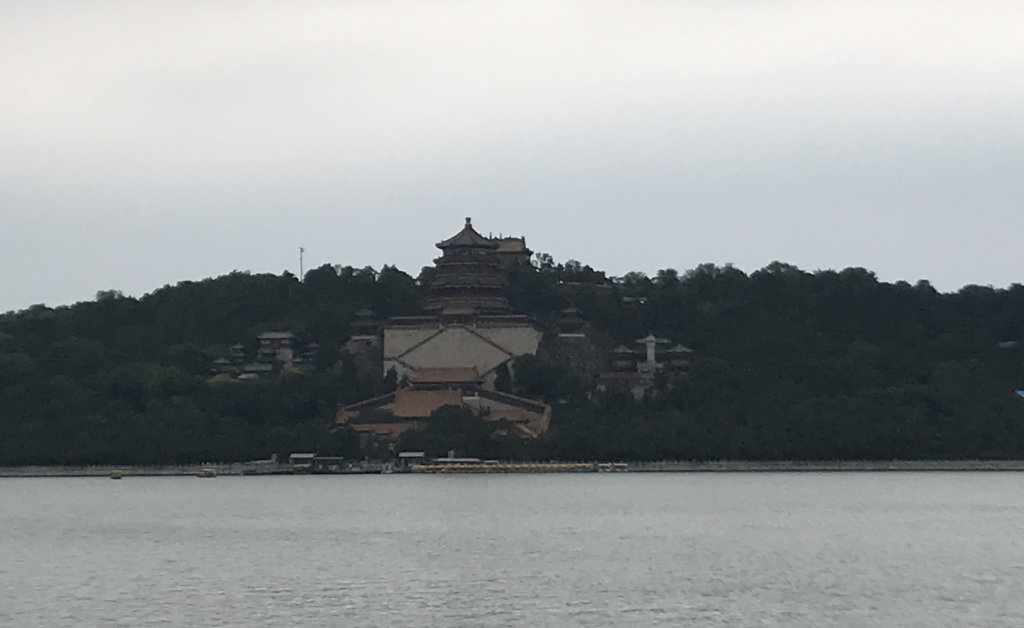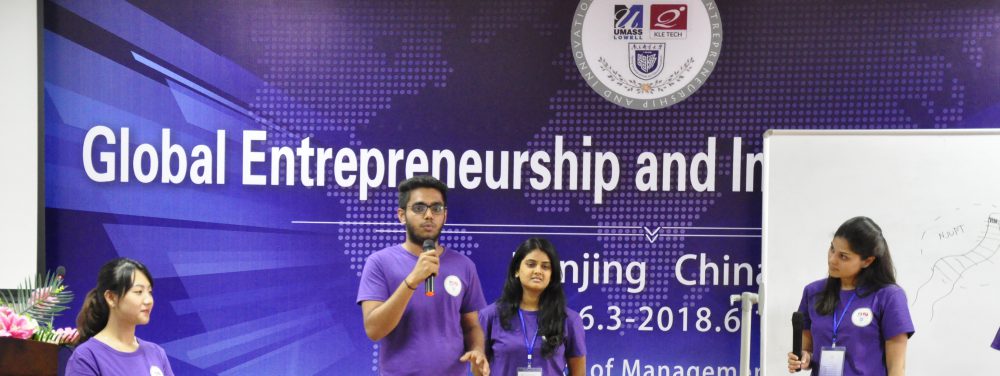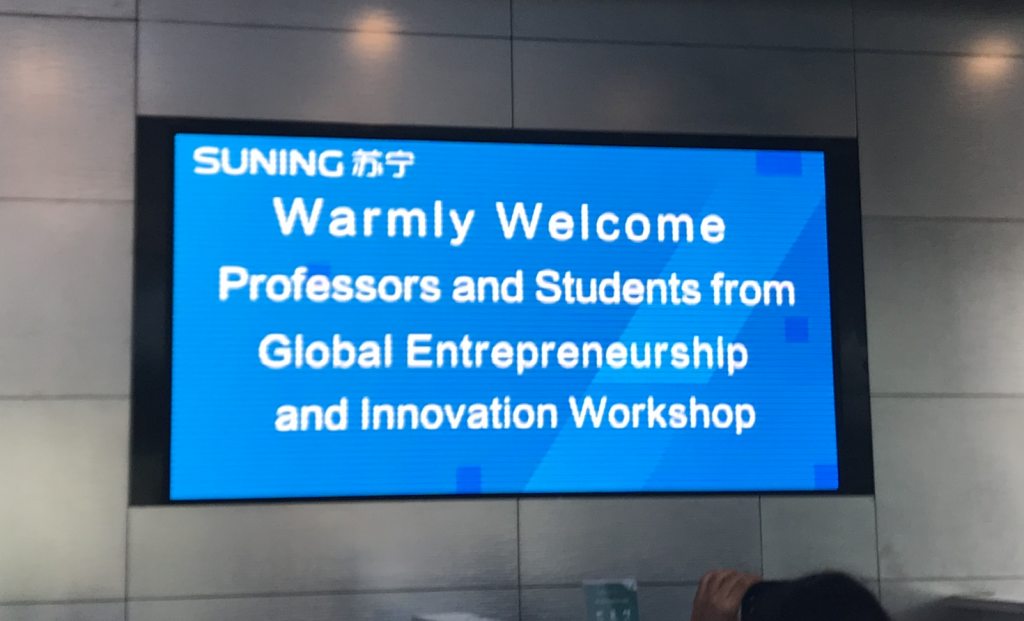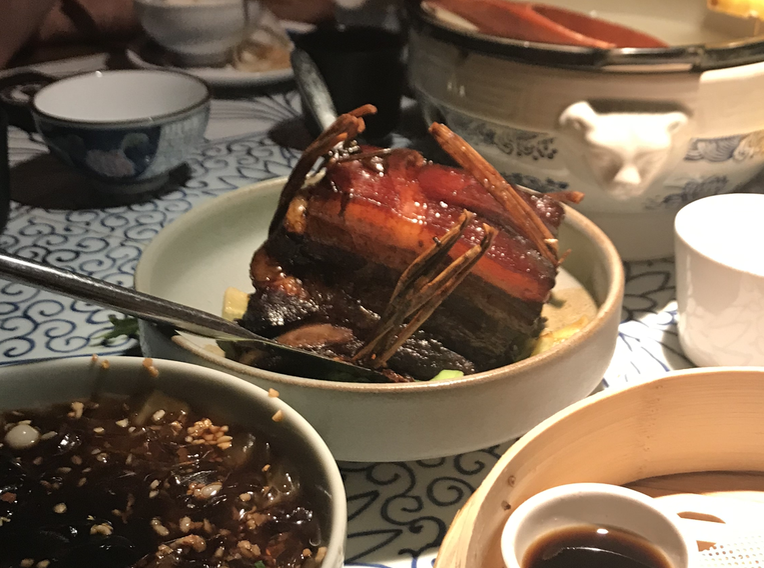Leaving Nanjing for Beijing:
Two weeks and an unforgettable experience, the day had arrived to leave Nanjing. After final presentations and cake, it was time to leave the place and the friends I have grown attached to. Out of all of the places I had traveled to, Nanjing was the most difficult to say goodbye to given all of the really close friends I had made during my short stay. Around 4 PM, we were taken to Nanjing South Rail Station where we boarded a high-speed train bound for Beijing South Rail Station.
The high-speed rail from Nanjing to Beijing far exceeded my expectations. Called 高铁 (gao tie) locally, the speed of the train traveled at a sustained speed of 350 kilometers an hour. Despite such speed at which we were moving at, the train ride was quite comfortable. It was surprisingly quiet inside of the cabin and interior was modern, clean, and spacious. After three and a half hours, we arrived at Beijing South Train Station just after 10:30 PM where we were greeted by our tour guide for the next few days.
Beijing:
We had a very early start to our first full day in Beijing as we met our tour guide at 8 AM headed for the famous Tiananmen Square. Once inside, we walked through its entire length, passing by The National Museum of China (the largest museum in China), The Great Hall of the People (building where the government convenes), The Monument to the People’s heroes, and the Mausoleum of Mao Zedong (building which holds the body of the former chairman Mao).
Adjacent to Tiananmen Square was the main entrance to the world-famous Forbidden City. The Forbidden city had seven different sections each with their own gate signifying their entrance. As we walked through each section, I was amazed at how similar each section looked to one another. By the time we reached the middle of the city, it was impossible to tell if the next gate was the end of the city or if it just marked the beginning of a new section.
The next morning, Sunday, we headed off to The Great Wall of China. The section of the wall visited was the 八达岭 (Ba Da Ling) section of the wall located about an hour and a half away from Beijing city. It was super foggy when we arrived, and it never cleared completely. Everything was damp, making the walk up and down the very steep inclines and staircases difficult. Despite all of this, I still had a fantastic time walking one of the Great Wonders of the World. The fog kept the air temperatures down around 20 degrees C, allowing me to explore more of the wall than if it were 40 degrees C and sunny. It was astonishing to personally experience how people, 600 years ago, during the Ming Dynasty were defending China against their invaders.
In the afternoon after a lunch break, we visited Summer Palace where the Emperors of China used to spend their time during the summer months. The palace was immense – around 4 times larger than the Forbidden City and very beautiful with 昆明湖 (Kun Ming Lake) located directly in the center of the area. We were only able to see a small fraction of the palace before it closed for the evening and we headed for dinner.
Of course, our Beijing experience would not be complete without trying the local food so we were brought to QJD (全聚德) restaurant where we had Peking Duck. Having eaten Peking duck elsewhere in the world, it was a special experience having it in the city the food was named after. This was a great to end an unforgettable trip to China!
